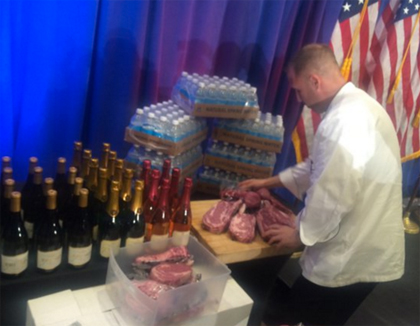Dr Vino's wine blog
wine talk that goes down easy
Wine import tax: Make American Wine Great Again?
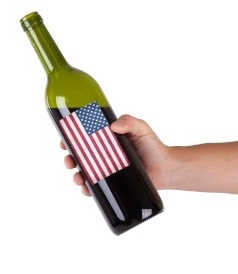 Economic policy has about as much clarity as a tank of Puligny after batonnage right now. There’s some reasonable certainty about various reforms (ahem, tax cuts) but one area that is shrouded in mystery: how imports will be taxed.
Economic policy has about as much clarity as a tank of Puligny after batonnage right now. There’s some reasonable certainty about various reforms (ahem, tax cuts) but one area that is shrouded in mystery: how imports will be taxed.
Trump made trade a big issue in the campaign and has continued in the same vein, doing industrial policy via Twitter since the election. Some policy wonks think that a huge change in the tax on imports may be forthcoming. A House bill from last year sought to impose punitive tariffs on imports to shame big box retailers such as Walmart, Home Depot and Target in their purchases from abroad.
Neil Irwin, writing in Sunday’s NYT sums up a relevant part of the destination-cased cash flow system:
A company that spent $80 making something that it sold overseas for $100 would pay no tax on its earnings. A company that imported goods worth $80 from abroad and them sold them domestically for $100 would pay tax on the full $100.
Perhaps there would be a carve-out for wine and gourmet items from abroad? Who knows. It’s not clear if this bill was targeting the retailers as importers or retailers, a key distinction in the wine world since the two “tiers†are (mostly) legally separated. Either way, about one out of every three bottles of wine consumed in America comes from overseas and could be subject to a new import tax, if one becomes law. In certain areas, such as New York City, it’s more than one out of every three bottles that is imported. And certain wine lists and shops feature imports as perhaps eight or nine out of every ten bottles on the shelf/list.
Would such tariffs be legal under the WTO? Does Trump care? Would there be retaliation against US products in overseas markets? Again, not a lot of clarity here.
But if there were a wine import tax or “border adjustments,” would it make American wine better? Probably not. US producers cannot make enough wine to keep up with US consumption. And stylistically, imports can be quite different. So it might be craft beer producers that emerge as the real winners of such a policy.
Again, there’s so little that’s been fleshed out beyond 140 character nuggets or campaign epithets. More will come in the coming weeks and months. Until then, drink up, foreign or domestic.
The latest in consolidation: Copain sells to Jackson Family
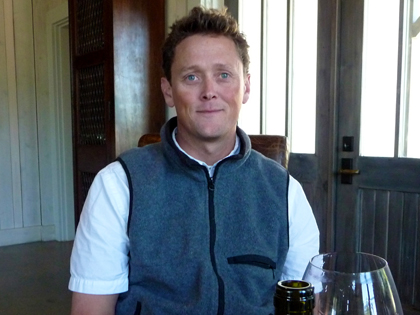
Copain winery has been sold to Jackson Family Wines for an undisclosed sum the wineries announced today.
Copain has taken twists and turns to end up at the winery perched above the Russian River Valley floor. Co-founded in 1999 by Wells Guthrie as winemaker, Read more…
State dinner wines for the Nordics!
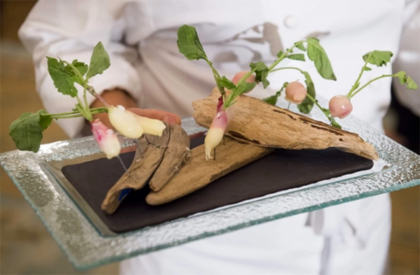
Tonight at the White House, President and Michelle Obama will welcome not one Nordic leader–but all five! What will they be drinking out of horned helmets in the viking style? Actually, it will be out of crystal glasses but we have the deets for you on the Nordic state dinner wines. Read more…
Who’s taking Constellation’s money now? Agustin Huneeus
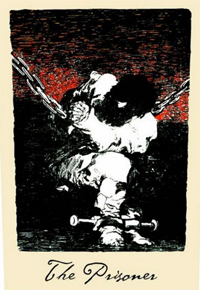 Word came out today that Constellation wines is buying The Prisoner wine(s) for a whopping $285 million. The seller was Agustin Huneeus who bought The Prisoner wine for $40 million in 2010.
Word came out today that Constellation wines is buying The Prisoner wine(s) for a whopping $285 million. The seller was Agustin Huneeus who bought The Prisoner wine for $40 million in 2010.
And who said there’s no money in wine?
The Prisoner wine was started in 1998 by Orrin Swift and Dave Phinney as heady red blend. The wine became popular but I always find it too intense–a cold wine, if you will, because if you have a cold, the oopmh from this zinfandel-based blend varieties and 14+% alcohol will still penetrate your congested sinuses. But there’s no arguing with the market, where the wine sells for $35 and up. (find this wine at retail)
In 2010, Wine Spectator reported that Huneeus Vintners paid $40 million and production volume of The Prisoner was 70,000 cases. At the time, Agustin Huneeus, Jr. told Wine Spectator that in selling The Prisoner, Phinney “wanted someone with a larger sales organization and someone with experience with big brands, and I have that.” Saldo is one of five other labels included in the sale.
Agustin Huneeus, Sr, now 82, has had a career spanning several continents and bulk wine as well as boutique. He started out at Concha y Toro in his native Chile, then worked for Seagram, ultimately landing in California in 1977. In 1985, became partner/president at Franciscan Estates. He sold that to…wait for it…Constellation Brands in 1999 but retained a stake in one of their brands, Veramonte in Chile (later buying it outright). Huneeus Vintners now has many holdings in North America including Quintessa, which they founded in the Rutherford District of Napa Valley in 1990. They also own Faust and Illumination from Napa Valley and have a majority stake in Flowers Vineyards.
Last year, Constellation bought Meiomi for $315 million from Joe Wagner, then 33 years old and whose family is best known for Caymus and Conundrum.
Remember in the 90s tech scene, the game was to make start up and then be bought out by Microsoft? In the wine world now, I guess is it the similar, except sell to Constellation?
In separate news, Constellation reported earnings that delighted Wall Street with wine sales up 7% to $737.2 million in the most recent quarter. So the plan seems to be working for all parties.
Trump winery: it’s yuuuge!
Last night after winning the Michigan primary, Donald Trump gave a press conference more worthy of QVC than C-SPAN: he had on display a variety of his Trump-branded products, including Trump steaks (free ginsu knife set?) to Trump Water and Trump Wine.
At one point, Trump, an avowed teetotaler, launched into a discussion about Trump Wine saying that it was the biggest winery in the East coast! And one of the biggest in America! Somehow, he stopped short of exclaiming that it’s yuuuuge, but, as we all know, when it comes to bank accounts, hands, and polls, size matters with this fellow.
Let’s fact check this! Trump bought Kluge Estate Winery and 776 acres of adjoining land near Charlottesville in 2011. At the time, twitterati derieded this wondering if he would rename the wine “comb-over cuvée.” He then commented on the acquisition: “I’m really interested in good real estate, not so much in wine. This place had a $28 million mortgage on it, and I bought it for $6.2 million. It’s a Trump deal!”
On the winery web site, they state that the estate today has 1,300 acres with 200 acres of vines planted to vinifera. The winery is 50,000 sf with 100,000 gallon tank capacity. the site size nothing about relative size but modestly states that they are proud to be among the 260 wineries in Virginia today. And hidden under the “Legal” tab, there’s this nugget: “Trump Winery is a registered trade name of Eric Trump Wine Manufacturing LLC, which is not owned, managed or affiliated with Donald J. Trump, The Trump Organization or any of their affiliates.” Oops.
To say that it’s the largest winery on the East Coast is a bit like being the tallest in Lilliput: California makes 89% of American wine and some vineyards there, such as Fred Franzias, have tens of thousands of acres of vines planted.
And from a tourism perspective who would ever want to vineyard because it is the biggest? If that were the case, Modesto would be the epicenter of wine tourism, rather than places like Napa. Try googling “biggest vineyard in Finger Lakes” and you’ll see how wine people don’t care as much about size since the results are for the best wineries to visit. But for a real estate developer who doesn’t drink wine, I guess you can see how quantity is more important than quality.
What do your stats tell you–does this claim hold up? Have you tried the wine? I see they have a “fortified chardonnay…”
State dinner wines for President Xi
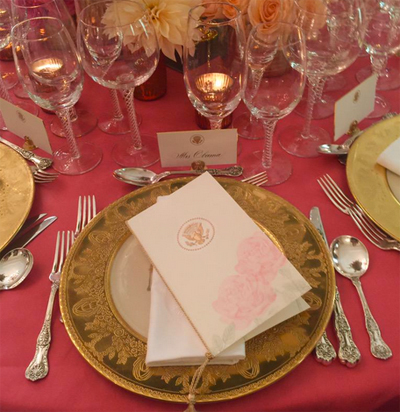 Tomorrow night, President and Mrs. Obama will host President Xi Jinping of China for a State Dinner at the White House. And we have been able to procure the menu for the “Autumn feast”–with the wine pairings!
Tomorrow night, President and Mrs. Obama will host President Xi Jinping of China for a State Dinner at the White House. And we have been able to procure the menu for the “Autumn feast”–with the wine pairings!
The White House has a tradition of serving only American wines. This policy has been in place since the 1960s, though “Tricky Dick” Nixon was known to pour American wines for guests, while he had Chateau Margaux served to him from a bottle wrapped in a white cloth napkin.
Thus it seems odd that the first wine on the menu tomorrow night is listed as “Shaoxing wine.” Shaoxing wine is a traditional Chinese wine fermented from rice. While no vintage or producer is listed on the menu, one is left to assume that this is, in fact, a wine…from China! Is this a break from the tradition of serving only American wines? It turns out: no. A query to a White House staffer clarified that the rice wine from China is in fact only an *ingredient* in the soup and will not be served qua wine.
Even if it were served , it’s not necessarily a bad thing to pour a wine from the guest of honor’s country. In fact, it can be respectful to show the honored (American) guests to the country’s wines. But I’m fine with the all-American approach too. Earlier this year, there was a sake toast (after the domestic sparkler) for Japan’s PM Abe.
The last state dinner for a Chinese president, the White House served Read more…
Blue Apron adds wine delivery – and huge ambitions
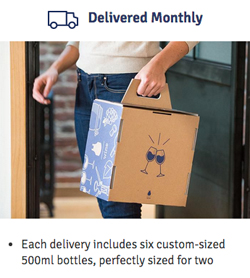 Another day, another company that wants to deliver wine to your home!
Another day, another company that wants to deliver wine to your home!
Today, it’s Blue Apron who is adding wine delivery. The Brooklyn startup offers “fresh ingredients, great recipes delivered weekly to your home.” Although I haven’t tried it, lots of people have since the company says they deliver three million meals-in-a-box per month now. Started in 2012, the company closed a $150 million round of funding at a $2 billion valuation.
They have just announced that wine will now be able to be delivered with the ingredient boxes. Sounds great! But which wines? They are mum on that. The only option is to sign up for the $65.99 monthly sampler, which includes six bottles. There’s a catch: the bottles are only 500ml, or two-thirds the size of a regular bottle. This unusual size means that they are not buying wines off the shelf but rather having a (domestic?) winery source the wine and put it in their unusual bottle size.
This particular arrangement could be a good thing–it could reduce prices to the consumer by some form of buying directly from wineries. But without knowing any producers going into the subscription, I’d be leery. Once bitten, twice shy–good thing you can cancel any time. An email to Blue Apron seeking further clarification of sourcing and how they are navigating the regulatory red tape was not returned.
But wait: The story is not over! In their piece on the news, Reuters quotes the Blue Apron CEO, Matt Salzberg, as saying “We think because we already have our large customer base already cooking meals with us on a regular weeknight basis, over time we can be the largest wine e-commerce company in the country.”
Wine e-commerce is mostly a snarl of red tape, and most companies in the space are private so it is hard to get information on revenues. Wine.com’s CEO posted that they had $75 million in sales in 2013. Further, Amazon is testing wine delivery in several markets and they are a formidable competitor in any area. Fresh Direct sells and delivers wines now. Some wine stores do tens of millions of dollars of e-commerce business. So Salzberg must have had a double shot of ambition in his coffee this morning to think Blue Apron wine is going from $0 to $75 million+ with (possibly) unknown wines in 500ml bottles!
Have you gotten wines from them? If so, how are they? Hit the comments!
Why you don’t find winery restaurants in the US
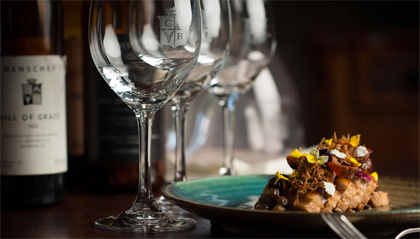
Last year, one of Australia’s leading wineries, Henschke Vineyards, branched out. The Henschkes opened Hill of Grace, a fine dining restaurant in downtown Adelaide at the Adelaide Oval, a place filled with tradition and lore as cricket test matches are played among various national teams. The restaurant’s wine list is centered on a Henschke wines but includes other Australian and imported wines. Wines from Henschke Hill of Grace, arguably Australia’s finest single-vineyard wine, are currently available back to 1990 and a glass of the 2010 can be yours for $125 US. When I spoke with Stephen Henschke recently in New York, he said the restaurant was doing very well and they were thrilled with the reception.
While that’s great for locals and tourists to Adelaide, it does leave the American wine mind wondering…why are there no winery restaurants away from wineries in America? Where’s the Screaming Eagle Nest at SF’s AT&T Park? Harlan Estates on Houston in Lower Manhattan? Franzia on Freeways?
The simple reason is that vertical integration is not allowed in the wine industry. In the aftermath of Prohibition, various state and federal authorities passed various regulations that split the industry into three tiers (producer, wholesaler, and retailer–or restaurant) and banned them from overlapping (with some exceptions that allow for one company to straddle two tiers). Tied-house laws, as they are called, go so far as prohibiting wineries from even providing incentives to retailers. On a related note, given that AB InBev seems intent on siphoning many beer brands–and even spirits with Diageo rumored as a target–into one giant keg, tied-house laws have thus far prevented the emergence of the Bud bar, Stella saloons, etc.
So, if you want a dine at a winery restaurant that’s not at a winery, you’re out of luck in America. Better hop on the plane(s) to Adelaide.
